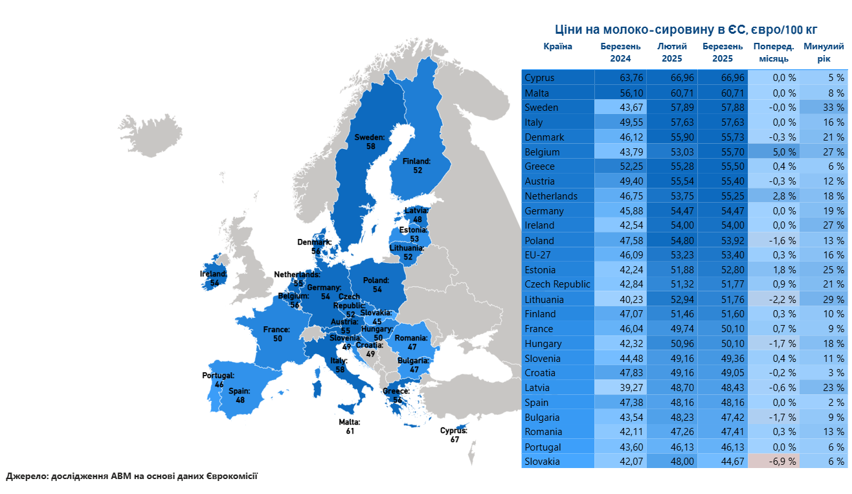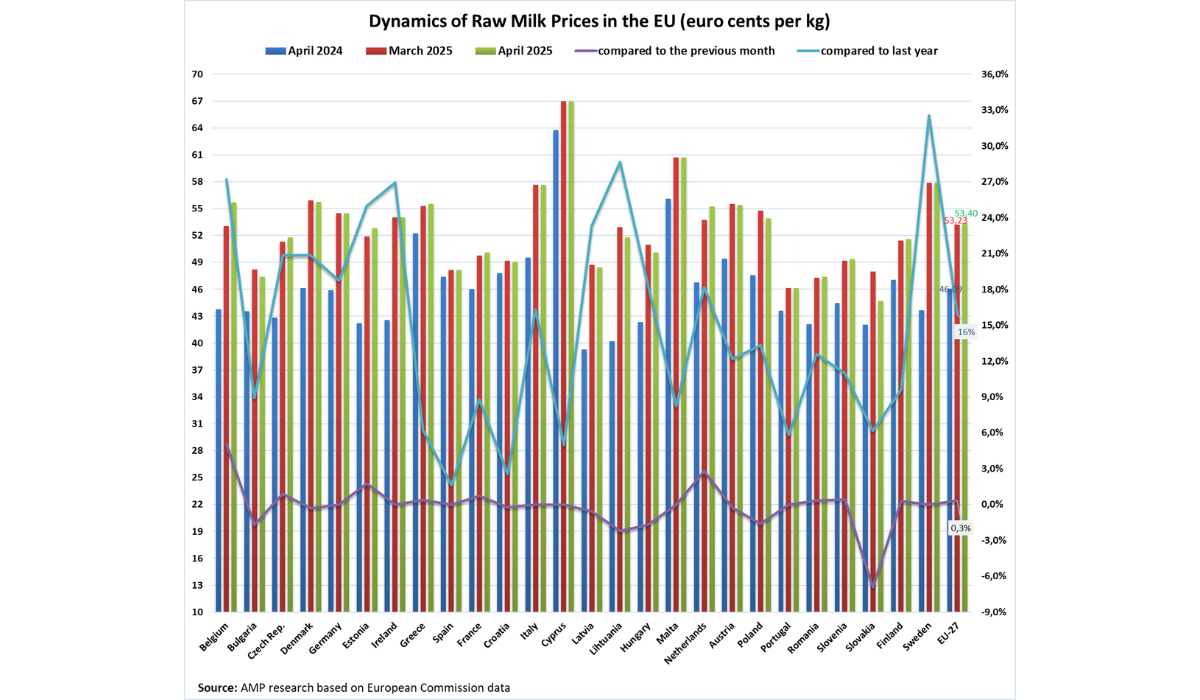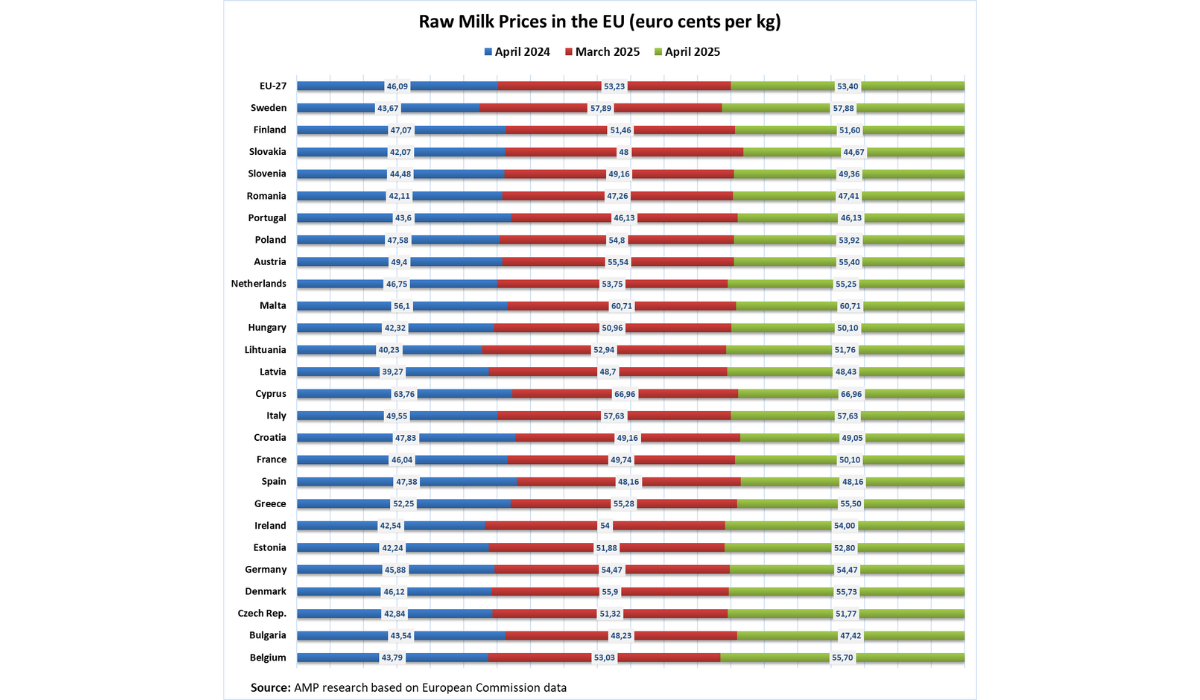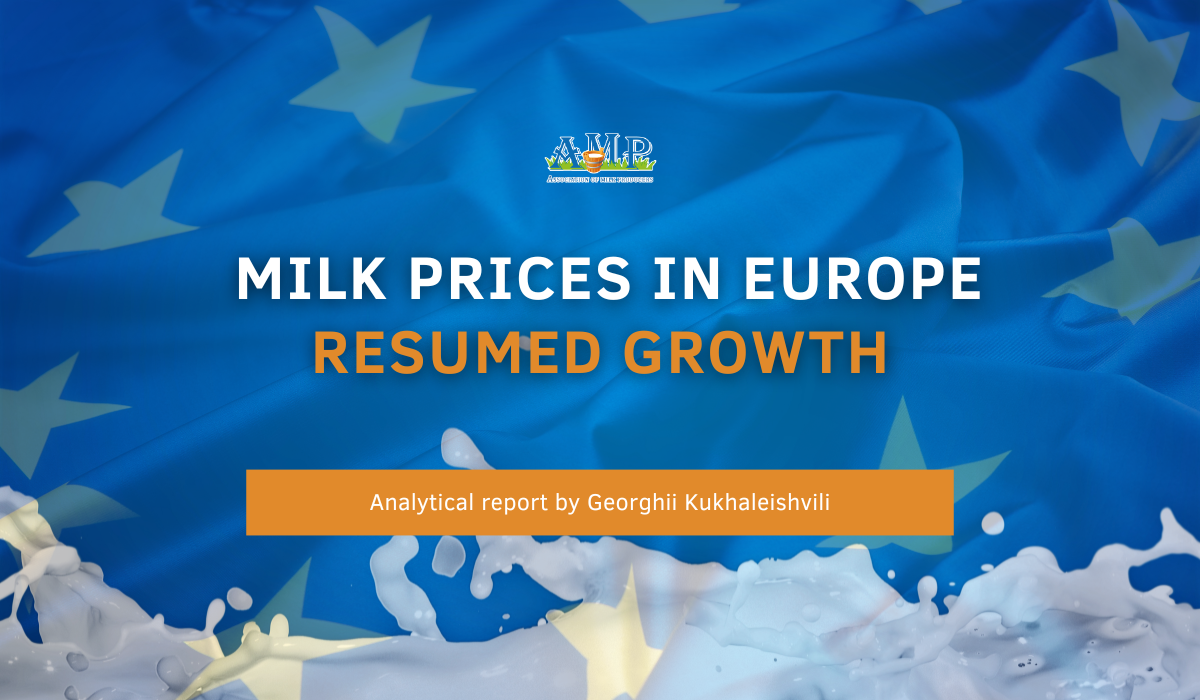Limited supply of raw milk in Europe, rising production costs, and demand from dairy processing enterprises are driving up purchase prices, according to Georghii Kukhaleishvili, an analyst at the Association of Milk Producers.
According to preliminary data from the European Commission, in April 2025, the average price for raw milk in the EU was 53.40 euro cents per kg, which is 0.3% more than in March 2025. Compared to the price in April 2024, milk in the EU has risen in price by 16%. In April, the price for extra grade milk in Ukraine was 39.44 euro cents per kg.

Compared to April, the price of raw milk increased in 9 EU member states. Among the major producers and exporters of dairy products, raw material prices increased in France to 50.10 euro cents per kg (+0.7%) and in the Netherlands to 55.25 euro cents per kg (+2.8%) compared to March 2025. The largest price increase was in Belgium, to 55.70 euro cents per kg (+5%).
In March, purchase prices did not change in Germany, Ireland, Spain, Italy, Portugal, Sweden, Malta, and Cyprus compared to March of this year.
Over the last month, raw milk became cheaper in 9 countries. The largest price decreases were observed in Slovakia to 44.67 euro cents per kg (-6.9%) and Lithuania to 51.76 euro cents per kg (-2.2%).
The most expensive raw milk is in Cyprus (66.96 euro cents per kg) and Malta (60.71 euro cents per kg). The lowest milk prices are received by farmers in Slovakia (44.67 euro cents per kg) and Portugal (46.13 euro cents per kg).
Compared to April 2024, raw milk prices have increased in all European countries. Compared to the same period last year, milk prices increased the most in Sweden (+33%) and Lithuania (+28.7%).
Georghii Kukhaleishvili suggests that the strengthening of raw milk prices in the EU in April may be due to a reduction in milk yield among the largest dairy product exporters and increased demand from dairy processing enterprises during preparations for the tourist season, the vacation season, and summer holidays. Usually, during this period in Europe, the consumption of ice cream increases, and the number of visitors to public catering establishments rises in popular tourist destinations in Southern Europe.
However, in January-March 2025, milk production in the EU decreased by 1.8% compared to the same period last year. Milk yield decreased in such leading milk-producing countries as Germany (-3.7%), France (-3.1%), Denmark (-1.1%), Italy (-1.8%), and the Netherlands (-3%). According to the USDA, one of the reasons for the reduction in raw milk supply in 2025 was the decrease in the number of cows in 2024. The spread of the bluetongue virus was one of the factors in the reduction of milk yield. In Eastern Europe, the situation was complicated by outbreaks of foot-and-mouth disease on dairy farms in Hungary and Slovakia.
According to Rabobank, there is a complex of problems in the countries of Northwestern Europe (Denmark, Germany, the Netherlands, Belgium), including a decrease in farm profitability, a shortage of workers, climate change, and strict environmental restrictions. Even in Poland, for the first time in several years, the growth of raw milk production has stopped. According to clal.it, in the first quarter, Poland produced almost as much milk as last year (+0.02%). Accordingly, the limited supply of raw milk in Europe, the increase in its production costs, and the demand from dairy processing enterprises are pushing up purchase prices.


Press Service of the Association of Milk Producers
Follow us on Facebook
Related News


